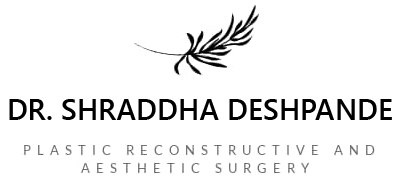Ears (Otoplasty)

The outer ear is normally positioned on the side of the head at an angle of about 20 to 35 degrees. If the angle is more than 35 degrees, they will appear to stick out. Protruding ears occur for a number of reasons such as overdevelopment of the cartilage, underdevelopment of the cartilage, injury or major accidents or deformity since birth. Some children with prominent ears have ears that appear normal at birth but the unusual shape can appear in the first 3 months. Some people with protruding ears feel that their ears are too prominent and this can cause embarrassment and psychological distress. Being teased or bullied because of “sticking-out ears” can affect a child’s self-confidence, their emotional well-being, and their behavior.
Otoplasty (also called ear pinning surgery) is a procedure to correct protruding ears. In case of injury or accident, your surgeon will also reconstruct one or both the ears to achieve natural looking appearance.
Operation
There are many different techniques used to accomplish ear pinning during otoplasty surgery. The surgical technique the physician chooses depends upon the amount of correction the patient’s ears require. More commonly, the surgeon makes an incision behind the ear to expose the cartilage. The cartilage is then reshaped and excess skin is removed. The ear is repositioned more closely to the head as required and the incision is closed.
An Otoplasty procedure can be performed using both local anesthesia (for adults) & general anesthesia (for children) & takes anywhere between 2 to 3 hours. The procedure is usually day care and patient can go home same day.
Result
Otoplasty procedure will help achieve following.
- Setting prominent ears back closer to the head
- Reducing the size of large ears
- Reconstruct ears appearing normal to overall face and figure
- Enhanced appearance and improved confidence
Similar to natural ears, the position of the ears after otoplasty will not match perfectly.
What about scars?
Scars are inevitable part of any surgery. For Otoplasty, incisions are usually made behind the ear and are hidden in the skin crease. Scars often fade with time and become barely noticeable. Scar lightening will take several months up to a year after surgery. Scarring tends to be most visible in people with extremely dark skin. Please discuss about scars with your surgeon.
Risks/ Complications
An Otoplasty surgery is generally a safe procedure but following potential complaints, risks and complications may occur; most of the which will subside in 2 weeks’ time. These are largely driven by one’s healing abilities.
- Bleeding, Infection, Bruising
- swelling & pain
- Nausea
- Itching around wound
In rare case, as with all surgical procedures, a revision surgery may be necessary to correct minor irregularities.
Care after treatment/ surgery
Immediately following surgery, your surgeon might put bandages to cover wounds to support natural healing process, minimize bruising and swelling. You will have to wear these tight bandages for one or two weeks. This includes wearing the recommended dressings at night. After removing the bandages, a loose but supportive headband is worn over the ears at night that will help remove tension from the ears. The individual can return to school or work within a week of surgery. Regular activity and exercise can restart within 2 weeks. Patients should avoid activities that could cause injury to the ears during the recovery period.
After you are discharged from hospital, you will see your surgeon in post-surgery follow up sessions during which as well, you will be given more guidance on care, activities etc. Any plastic or other surgery does not stop biological ageing process and your surgeon will recommend you ways to have effect of surgery lasted for long.
Costs
Costs for individual procedures will vary widely based on procedure & hospital chosen for surgery but usually involves following.
- Surgeon’s fee
- Hospital facility charges
- Anesthesia fees
- Medical tests & medicines
- Any post-surgery garments
If revision surgery is needed in a rare case, your surgeon will not charge Surgeon’s fee but other costs will have to be borne by patient as applicable.
